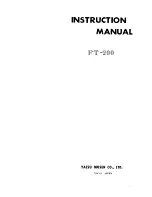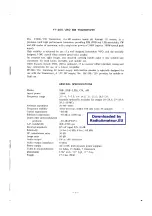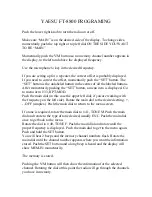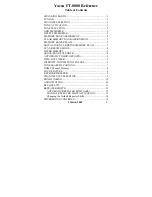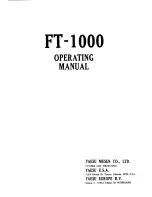
Quick Start
R&S
®
ESR
99
User Manual 1175.7068.02 ─ 12
3. For "Trace 1", press the button in the "Trace Mode" column and select "Average"
from the list.
The noise component of the trace is smoothed by averaging 10 successive traces.
4. Switch off trace averaging by pressing the button in the "Trace Mode" column and
selecting "Clear Write" from the list.
Reducing the noise by reducing the measurement bandwidth
The noise is reduced in proportion to the bandwidth by reducing the resolution band-
width, i.e. reducing the resolution bandwidth by a factor of 10 also reduces the noise by
a factor of 10 (which corresponds to 10 dB). The amplitude of sinusoidal signals is not
affected by reducing the resolution bandwidth.
1. Set the resolution bandwidth to 10 kHz.
a) Press the [BW] key.
b) Press the "Res BW Manual" softkey and enter
10 kHz
.
The noise decreases by approx. 25 dB compared to the previous setting. Since
the video bandwidth is coupled to the resolution bandwidth, it is reduced to 30
kHz in proportion to the resolution bandwidth. This causes the sweep time to
increase to 3.0 seconds.
2. Reset the resolution bandwidth (couple it to the span) by pressing the "Res BW
Auto" softkey in the "BW" menu.
3.5.3
Measuring Signal Spectra with Multiple Signals
3.5.3.1
Separating Signals by Selecting the Resolution Bandwidth
A basic feature of a Signal and Spectrum Analyzer is the ability to separate the spec-
tral components of a mixture of signals. The resolution at which the individual compo-
nents can be separated is determined by the resolution bandwidth. Selecting a resolu-
tion bandwidth that is too large may make it impossible to distinguish between spectral
components, i.e. they are displayed as a single component.
An RF sinusoidal signal is displayed using the passband characteristic of the defined
resolution filter (RBW). Its specified bandwidth is the 3 dB bandwidth of the filter.
Two signals with the same amplitude can be resolved if the resolution bandwidth is
smaller than or equal to the frequency spacing of the signal. If the resolution bandwidth
is equal to the frequency spacing, the spectrum display shows a level drop of 3 dB pre-
cisely in the center of the two signals. Decreasing the resolution bandwidth makes the
level drop larger, which thus makes the individual signals clearer.
Higher spectral resolution at a narrower bandwidth is accomplished through longer
sweep times at the same span. Reducing the resolution bandwidth by a factor of 3
increases the sweep time by a factor of 9.
Basic Measurement Examples
































